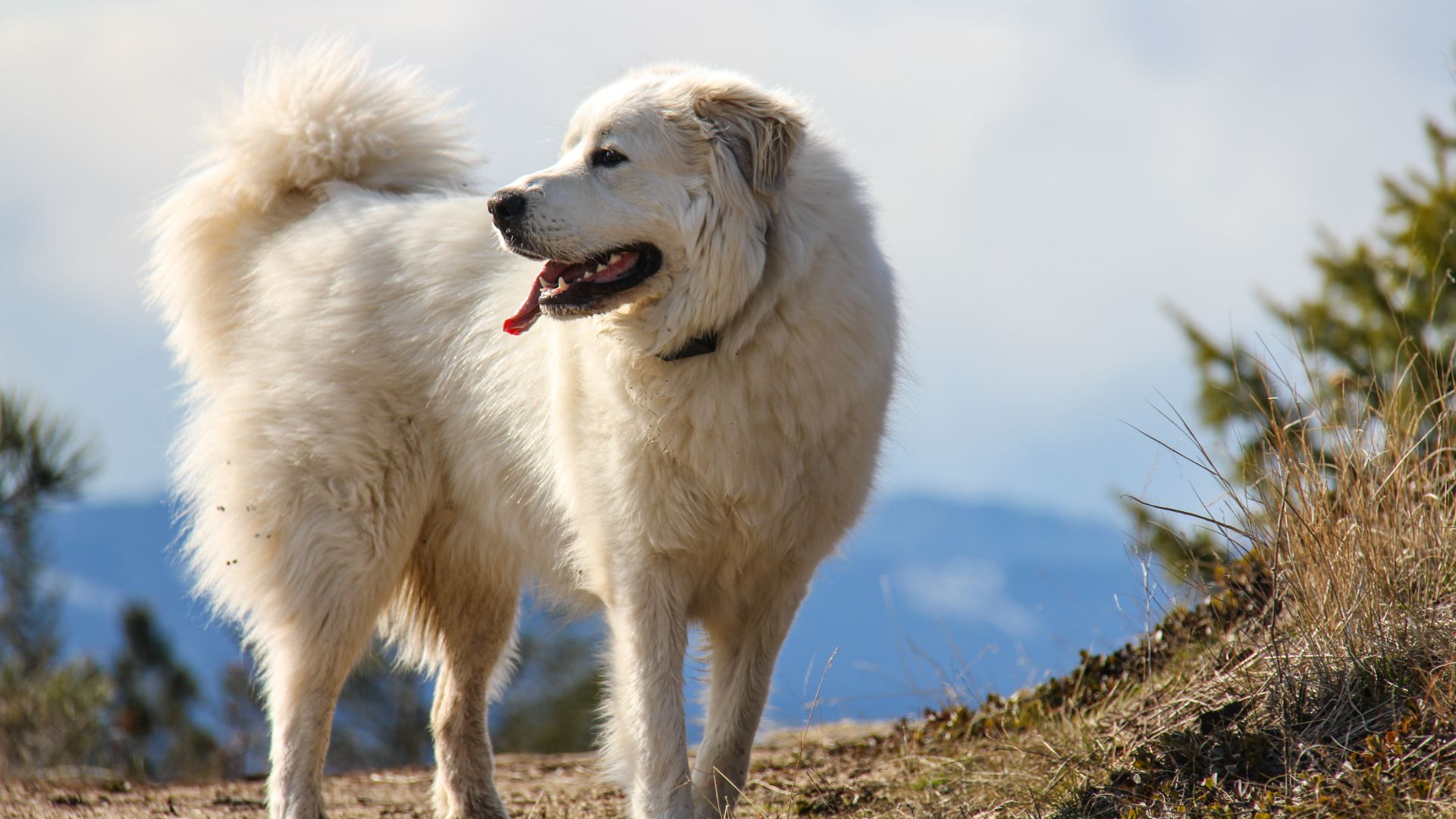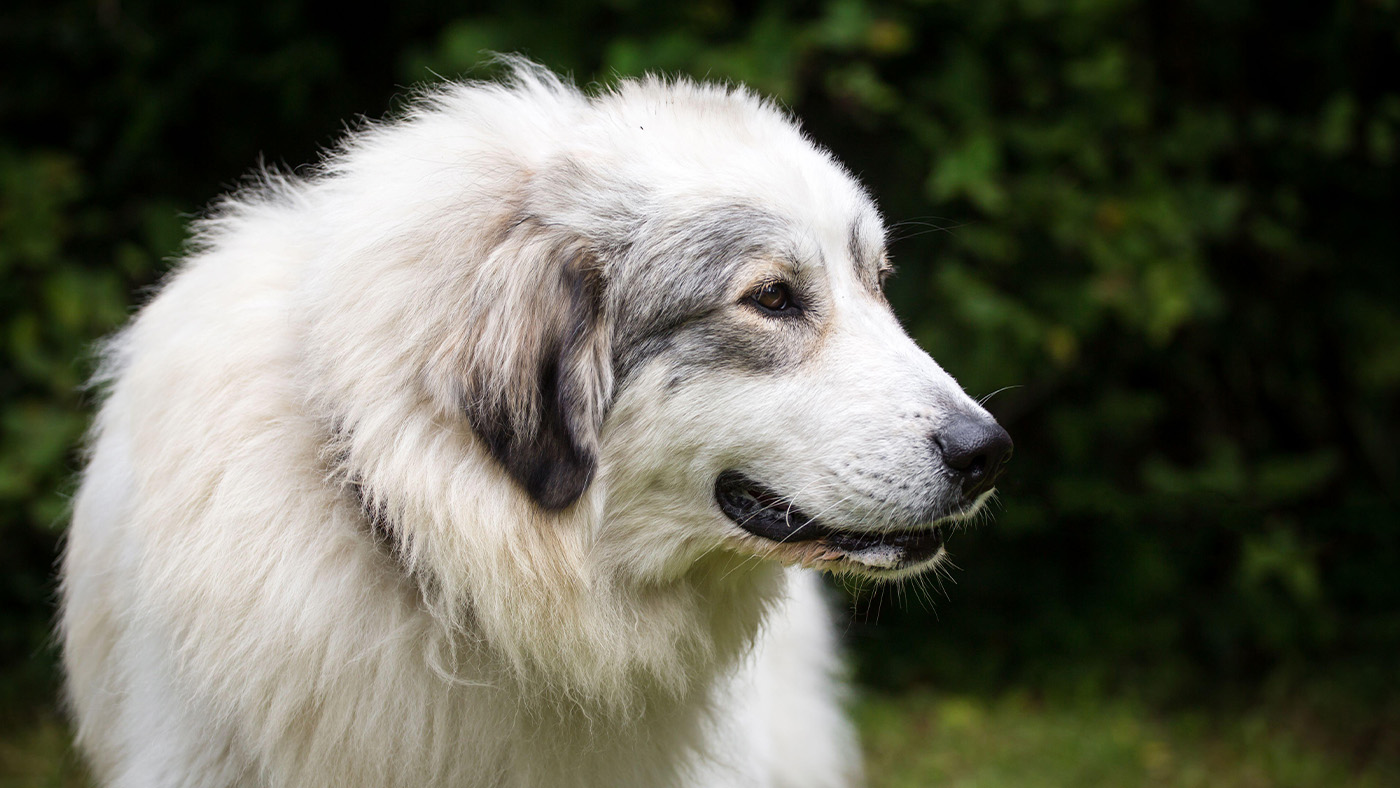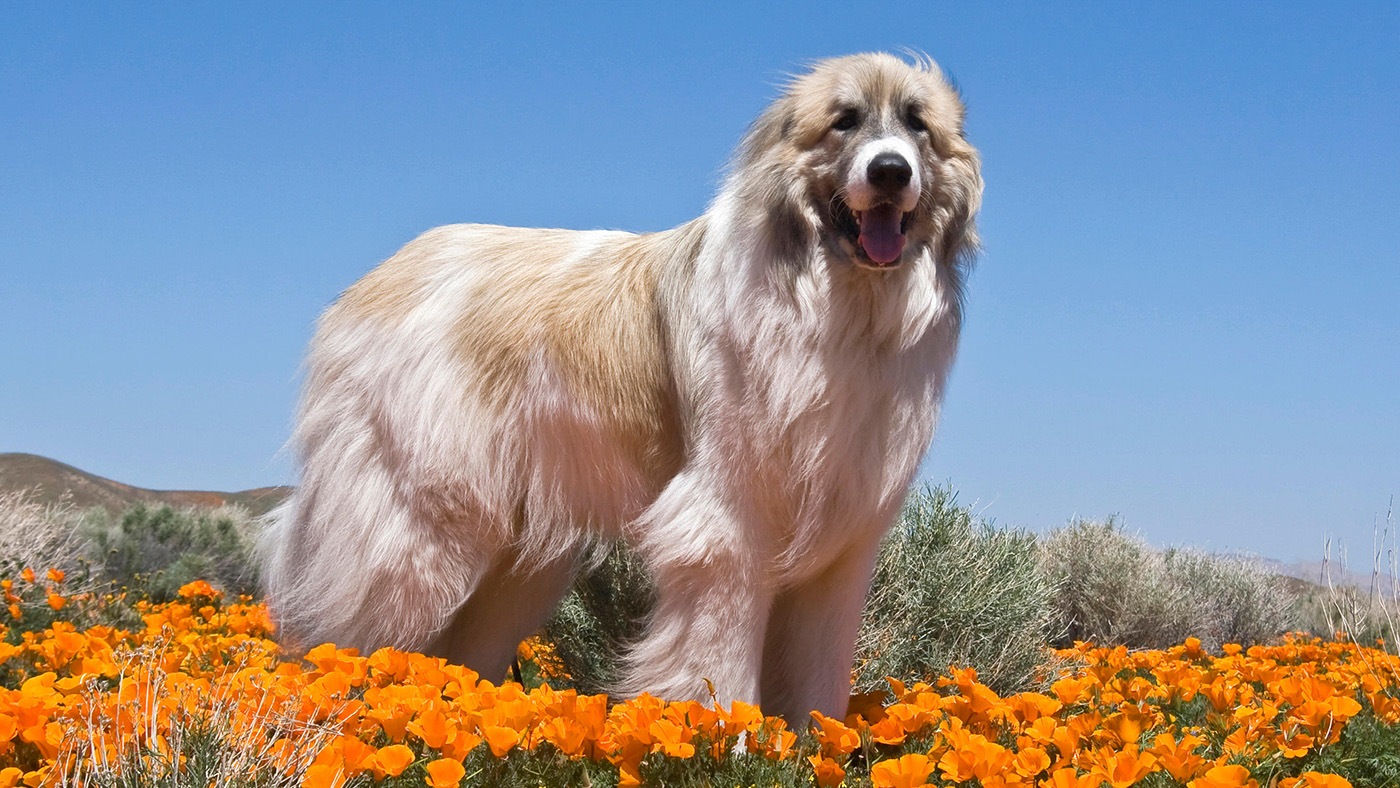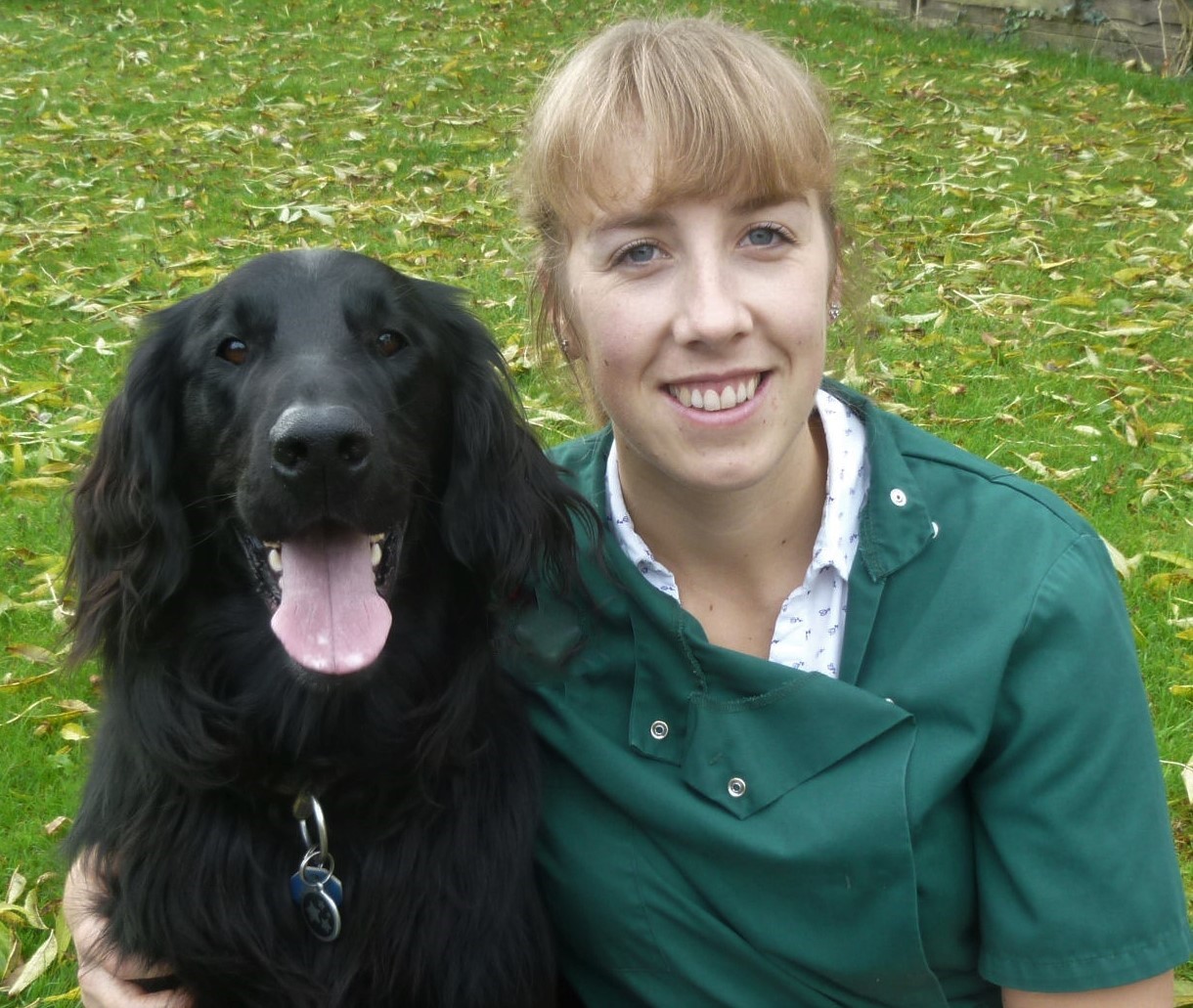Great Pyrenees are wonderful guard dogs but can they make great pets too?
The Great Pyrenees may be large and imposing but it is also among the most loyal and protective


Life expectancy: 10–12 years years
Size: 27-32 inches (male); 25-29-inches (female)
Coat: Tick, double coat
Temperament: Patient, gentle, affectionate, stubborn, confident
Exercise needs: Up to an hour daily
Origin/native country: France/Spain
Having originated in the Pyrenees Mountains as far back as the 15th century, Great Pyrenees were bred as flock guardians. Their large size ensured they were a formidable presence which, coupled with their ability to suddenly spring into action when faced with potential danger, made them effective guardians.
Their strength and stamina also made them suitable for pulling sleds or carts and they were once a familiar sight delivering milk in France and Belgium.
In more recent times, they’ve become relatively popular pets and families love their protective, affectionate nature. But as we’ll see in this guide – put together with the aid of expert vet Dr Rebecca MacMillan – Great Pyrenees are not without their challenges.
Does a Great Pyrenees need a lot of exercise?
Great Pyrenees dogs don’t have an abundance of expendable energy. In fact, they are one of the sleepiest dog breeds and they can spend much of the day on the ground with their eyes closed, having forty winks – and they can even do so if it’s lashing down with rain.
This allows them to conserve sufficient energy to deal with any potential danger when guarding livestock from potential predators. But it also means you won’t be burdened with having to take them for lengthy walks.
“Like many large breed dogs, the Great Pyrenees only need moderate amounts of exercise,” Dr MacMillan says.
Still, as the definition of an outdoor dog, you may still need to get out and about.
Get the best advice, tips and top tech for your beloved Pets
“Around 30-60 minutes of good activity per day is recommended, depending on their age and health status,” Dr MacMillan says.
Allow this breed to roam around a large, safe, secure area, however, and you can reduce the amount of time you need to spend on exercising. Great Pyrenees also love to pull carts given their natural inclination to work.
Are Great Pyrenees easy to train?
Great Pyrenees are inherently protective but they are also of fair intelligence. According to professor of canine psychology Stanley Coren, author of The Intelligence of Dogs, Great Pyrenees will only obey the first command 30% of the time and it’ll take as many as 80 repetitions to get them to understand a new command.
“This dog was bred to work independently from its owner, meaning that they can be stubborn and like to make their own decisions sometimes,” says Dr MacMillan. “This can make training challenging for a novice. But with the right consistent and positive approach it is achievable. Just keep sessions short to avoid them getting distracted."

Do Great Pyrenees make good family pets?
Great Pyrenees can make good family pets.
“That is due to their affectionate and gentle nature,” says Dr MacMillan. As such, they will form a strong bond with their owners and they’ll also be great with children, even small ones.
But since Great Pyrenees are herding dogs, they have an innate drive to protect their flock – and that includes their human family members. This can pose a problem if you have visitors.
“Great Pyrenees were originally bred to guard sheep and they can be protective over their owners,” Dr MacMillan explains. “But early socialization and training are essential to make sure that these dogs are comfortable with visitors and strangers.”
The main thing to be aware of is a Great Pyrenees’ tendency to bark at pretty much anything they see.
“Young children may find their loud bark and size a bit intimidating, but they are known for being patient and loyal dogs,” Dr MacMillan adds.
Do Great Pyrenees need a lot of grooming?
You only need to take one look at a Great Pyrenees to work out that they could be a bit of a grooming handful.
“These dogs take a bit of maintenance,” Dr MacMillan says. “They have a thick double coat which can easily become matted without frequent brushing.”
You will need to get handy with the best vacuum cleaners for pet hair because Great Pyrenees are a breed that sheds a lot.
“This dog sheds moderate amounts all year round, with a couple of heavy seasonal blow outs,” Dr MacMillan says. “Great Pyrenees are not a hypoallergenic breed for this reason.”
With regular maintenance, however, you will head off most problems – and with a towel handy you can keep on top of one of the biggest droolers. Keep their nails short and keep the scissors going over certain parts of their fur.
“You might choose to trim the hair regularly, especially to keep their fluffy feet and ears in check,” Dr MacMillan says.
Wisdom Panel Breed Discovery DNA Kit | Amazon
Not sure exactly what breed your dog is? This kit screens for 365+ breeds – because knowing every detail about your dog helps you understand how best to care for them.
Common Great Pyrenees health problems
Great Pyrenees are generally healthy but inherited joint disease is common.
“Elbow and hip dysplasia can cause joint abnormalities leading to painful lameness and the early onset of arthritis,” Dr MacMillan says.
This breed can also suffer from inherited dwarfism.
“This is called chondrodysplasia, but choosing your puppy from a breeder that health screens and only mates healthy dogs could greatly reduce the risk of these conditions being passed this on to their offspring.”
Neuronal degeneration is another inherited disorder common among Great Pyrenees.
“Signs can begin when puppies are less than a year old,” says Dr MacMillan. “It may start mild with symptoms, such as tripping or dragging a paw, but it will eventually progress until the dog is no longer able to walk. There is no cure for this, but genetic screening tests are available.”
Finally, giant dogs with deep chests are at increased risk of gastric dilatation volvulus (GDV).
“In this condition the stomach bloats and becomes twisted on itself. This condition is fatal without prompt veterinary treatment.”
Should I get a Great Pyrenees?
Great Pyrenees are suitable for potential owners with plenty of space – they’ll do very well on a farm, for example, where they can work guarding livestock or in situations where they can pull a cart (it’s why they are among the best farm dogs).
They are also great with families – young children will love them and you’ll feel happy at the lengths they’ll go to ensure they’re safe. But given how inactive they can be, they won’t particularly fit in well with owners who want a buddy to accompany them on long walks and adventures. And if you’re after a low maintenance breed, you should also look elsewhere.
The Complete Guide To The Great Pyrenees | Amazon
Using interviews with four top Great Pyrenees breeders, best-selling author Erin Hotovy has created an in-depth look at what it really takes to successfully live with, raise, and train a Great Pyrenees.

Rebecca is a veterinary surgeon who graduated in 2009 from the Royal Veterinary College in London. She has a wealth of experience in first opinion small animal practice, having done a mixture of day-to-day routine work, on-call emergency duties and managerial roles over the years. Rebecca enjoys medicine in particular and she is proud to have recently achieved a BSAVA postgraduate certificate in small animal medicine (with commendation).
She writes on various feline and canine topics, including behavior, nutrition, and health. Outside of work and writing she enjoys walking her own dog, spending time with her young family and baking!
Edited by Georgia Guerin.
This feature was last updated on March 3, 2025.

David Crookes has been a journalist for almost 30 years and he has written for a host of magazines, newspapers, websites and books including the World of Animals Annual, BBC Earth, Live Science, The Independent and Tom’s Guide.
Born in England, he lives with two cats but he’s also keenly interested in the differences between the huge number of dog breeds – in fact, you can read many of his breed guides that he’s written in collaboration with vets here on PetsRadar.
With a lifelong passion for technology, too, he’s always on the lookout for useful devices that will allow people to keep their pets happier and healthier, and provide them more time to spend together.
David has a degree from Durham University, as well as postgraduate diploma in journalism from the University of Central Lancashire.


